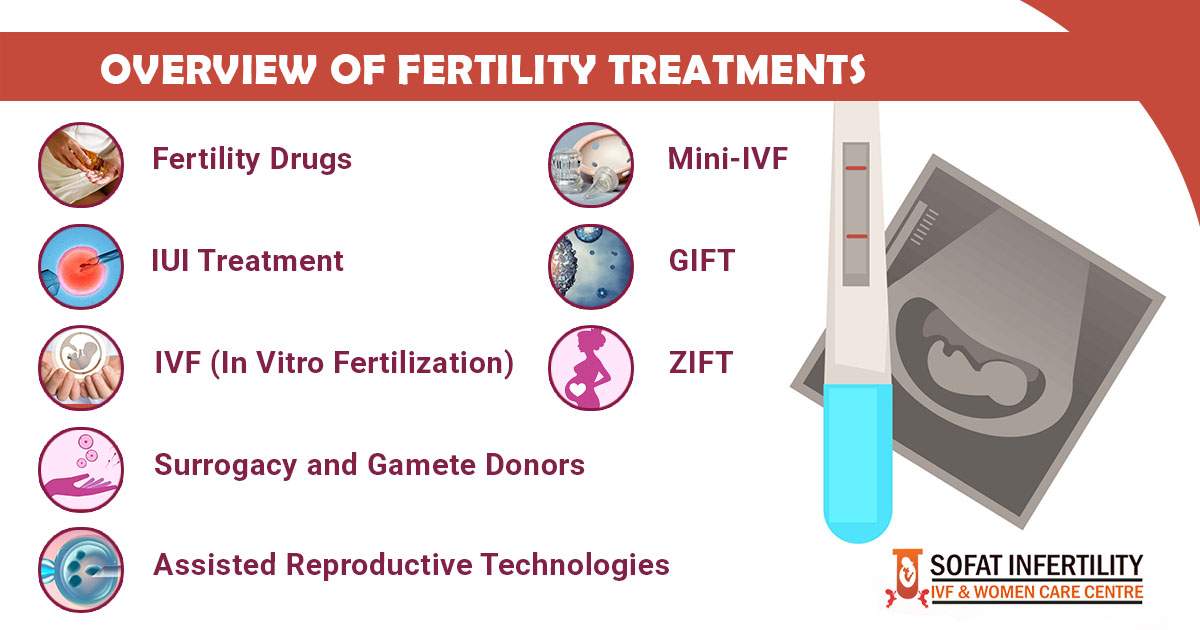![]()
Sofat Infertility & Women Care Centre Punjab: After having your fertility evaluation, you can start thinking about your treatment options. Fertility treatment covers medications that stimulate the production of eggs or sperms. The procedures which involve the handling of eggs and sperm are also included in it.
However, Infertility treatment also includes surgical options, major lifestyle changes, weight loss programs, and treatment of a medical condition which could be causing infertility. It will also depend on who is infertile, the man, the woman or both of them. You will be happy to hear that not all need IVF.
Fertility Drugs
Fertility drugs are medicines that are used to stimulate ovulation. Some of them can also be used to stimulate sperm production in men. These drugs help in overcoming ovulation disorders which is the reason for about one-fourth case of female infertility.
Fertility drugs are also used during IUI and IVF treatment even if there are no ovulatory problems. Fertility drugs successfully stimulate ovulation. The most common fertility drugs are Clomid, Femara and gonadotropins Clomid, Femara, and gonadotropins.
IUI Treatment
It involves the placement of specially washed sperm of the male partner directly into the uterus of the female partner. This treatment is primarily used in male infertility, unexplained infertility, and cases in which there is a problem in the cervical mucus of the woman or the ones in which there is a requirement of donor sperm.
ART (Assisted Reproductive Technologies)
Assisted reproductive technologies (ART) refer to fertility treatments that involve the handling of eggs or embryos. IVF, GIFT, and ZIFT are the main ART procedures. The most common form of ART is IVF. GIFT and ZIFT are used less frequently.
IVF (In Vitro Fertilization):
IVF is a procedure in which the primary step is the stimulation of the eggs in the ovaries to produce eggs. The next step is to extract the eggs from the woman’s body once they mature. After extraction, they are kept in a culture dish that also has nutrients to enrich the process of fertilization. The sperms extracted from the male partner are placed in this culture dish and left for the fertilization process. Hopefully, the fertilization takes place and the embryos can be seen growing. The stable embryos are selected and implanted into the womb of the woman. If the implantation is successful, then the woman can confirm her pregnancy through a pregnancy test.
Mini-IVF:
It is a lesser-known IVF option. It differs only slightly from the common IVF. It uses fewer medications. The procedure stimulates the ovaries only to an extent to get a few eggs.
GIFT:
The technique of gamete intrafallopian transfer involves the placement of the egg and sperm in the woman’s fallopian tubes.
ZIFT:
zygote intrafallopian transfer involves the placement of the zygote in one of the fallopian tubes using laparoscopic surgery.
Surrogacy and gamete donors
Sometimes, IVF alone may not be enough for a successful pregnancy. Sperm or egg donors might be required if there is a problem with the production capacity of the partners. Embryo or uterus donors are also available for these techniques.







